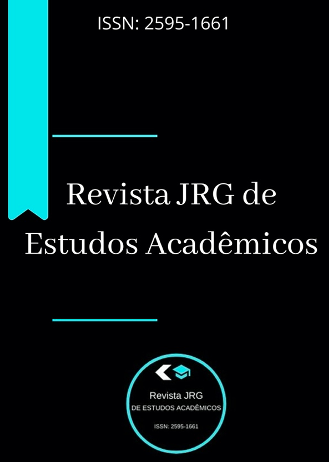THEOBROMINA, SUBSTANCE FOUND IN COCOA
DOI:
https://doi.org/10.5281/zenodo.4450841Keywords:
ALKALOIDS. THEOBROMINE. COCOA.Abstract
Nitrogenous alkaloids of the methyl xanthine family are derived from purine bases and xanthines, the main ones being caffeine, theobromine and theophylline. Theobromine A dimethylated xanthine, has a less basic character than caffeine and can be solubilized in alcohol, chlorinated organic solvents and water can be found and isolated in cocoa and derivatives or as a result of caffeine metabolism, responsible for the feeling of well-being, pleasure. Being that studies have been since the years of 1536 that the Spaniards used medicinally like treatment of several diseases. It is a very ingested natural alkaloid and has numerous pharmacological effects underway in several studies developed mainly action on the central nervous system. For this work, samples of industrialized chocolate powder were analyzed to verify the presence of this compound and quantified if there is actually pre- established quantity in its packaging used a known standard and the result was compared through spectrophotometry. To quantify the samples, the UV-Vis spectrophotometer was used and for the construction of a calibration curve, it used a theobromine standard in 5 different concentrations. It was developed in triplicates to confirm analyzes and make a comparison of all these data through tables with mean and standard deviation.
Downloads
References
(1) Salva TJG. Relação entre os teores de teobromina e cafeína em grãos de café oriundos de cruzamentos entre cafeeiros mutantes ac e cultivares elites. IX Simpósio de Pesquisa dos Cafés do Brasil. Curitiba, Jun. 2015.
(2) Amaechi BT, Porteous NB, Ramalingam K, Mensinkai P, Ccahuana Vasquez RA, Sadeghpour A. et. al. Remineralization of artificial enamel lesions by theobromine Carie Res. 2013;(4):399-405.
(3) Verma A, Khurshid S, Parveen F, Khanna S, Pandey P. Remineralization: An approach towards conservation of tooth. Journal of Evolution of Medical and Dental Sciences. 2015 Jul. 4(61):10713-19.
(4) Nakamoto T, Simmons WB Jr, Falster AU. forming systems: Methods and products. United States patent US 6183711. 2001 Feb. 06.
(5) MATISSEK, R. Evaluation of xanthine derivatives in chocolate – nutricional and chemical aspects. Z. Lebensm. Unters. Forsch., Munich, v. 205, n.3, p. 175- 184, 1997.
(6) ZOUMAS, B. L.; KREISER, W. R.; MARTIN, R. A. Theobromine and caffeine content of chocolate products. J. Food Sci., Tokyo, v. 45, p. 314-316, 1980.
(7) LANNES, S. C. S. Estudo das propriedades fisicoquímicas e de textura de chocolates. São Paulo, 1997. 175p. (Tese de Doutorado. Faculdade de Ciências Farmacêuticas. Universidade de São Paulo).
(8) KUMAZAWA, T.; SENO, H.; PEN-LEE, X.; ISHII, A.; SUZUKI, K. W.; SATO, K.; SUZUKI, O. Extraction of methylxanthines from humans body fluids by solid-phase microextraction. Anal. Chim. Acta, Amsterdam, v.387, n.1, p.53-60, 1999.
(9) STAVRIC, B. Methylxanthines: toxicity to humans III. Theobromine, paraxanthine and the combined effects of methylxanthines. Food Chem. Toxicol., Oxford, v.26, n.8, p.725-733, 1988.
(10) KURIBARA, H. Enhancement of the behavioral toxicity induced by combined administration of ethanol with metilxanthines: evaluation by discrete avoidance in mice. J. Toxicol. Sci., Tokyo, v. 18, n.2, p.95-201, 1993.
(11) KURIBARA, H.; ASAHI, T.; TADOKORO, S. Behavioral evaluation of psycho- pharmacological and psychotoxic actions of methylxanthines by ambulatory activity and discrete avoidance in mice. J. Toxicol. Sci., Tokyo, v. 17, n.2, p.81-90, 1992.
(12) ETENG, M. U.; EYONG, E. U.; AKPANYUNG, E. O.; AGIANG, M. A.; ARENU, C. Y. Recent advances in caffeine and theobromine toxicities: a review. Plant Foods Hum. Nutr., Dordrecht, v.3, n. ?, p.231-243, 1997.
(13) http://www.scielo.br/pdf/rbcf/v40n3/17. (14) https://pt.wikipedia.org/wiki/Teobromina











































